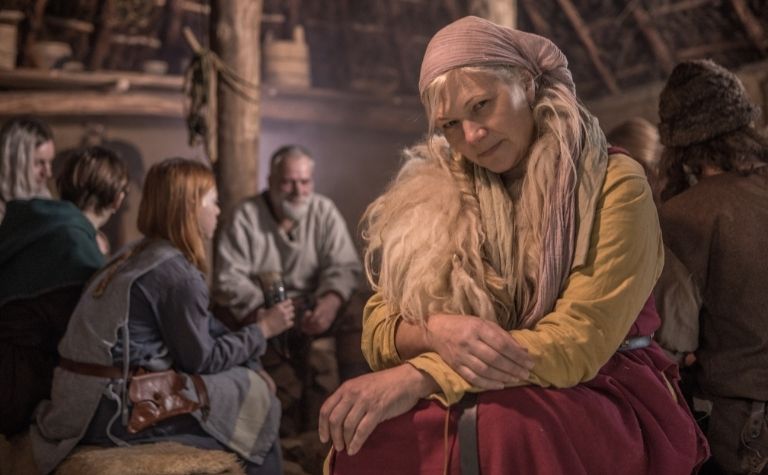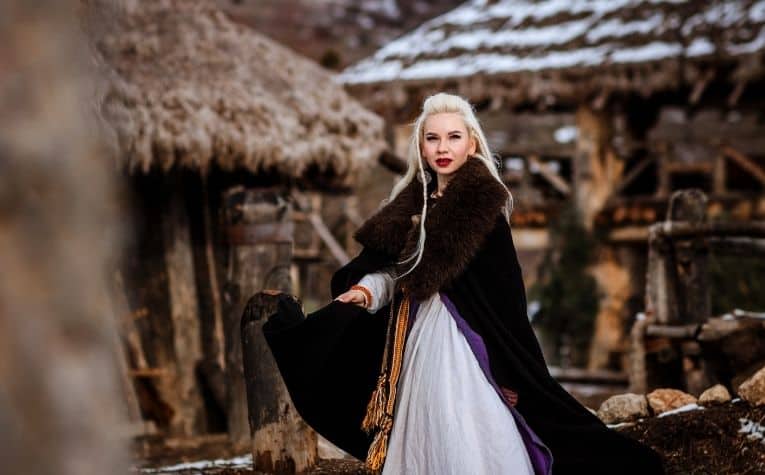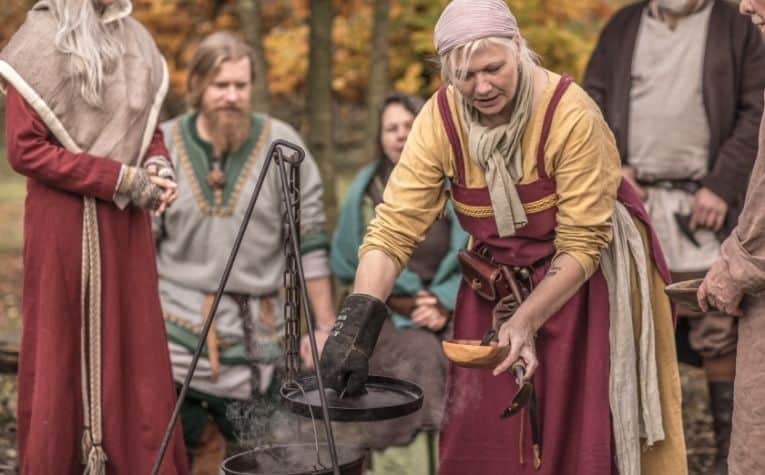In the eyes of many, especially the people of Northern Europe whose towns and villages fell victim to their raids, the Vikings were a violent, bloodthirsty people who gained riches and expanded their empire through force and mayhem.
But beneath this outward perception of ruthlessness, Viking society was highly structured and orderly, which is perhaps best exemplified by their marriage practices.
The Viking people married young. The union of husband and wife was arranged by their families and was a formal contract bound with financial and moral obligations.
Despite existing in a male-centric society, Viking couples shared domestic duties, and wives were allowed to divorce their husbands.
The institution of marriage was important to the Vikings, and their men and women were expected to marry and have children to sustain their civilization.
When it came to matters of matrimony, the Vikings were practical yet idealistic – typical for the era, yet ahead of their time.
Perhaps most surprisingly, Viking marriage was feminist in some respects.
Separate fact from fiction: See The Truth About Viking Women: 15 Facts to learn more.

Viking Marriages Were Viewed as Social Contracts
Viking men and women were expected to marry before age 20, as life expectancy during those times was roughly 50 years, with many Norse people failing even to reach that age.
Some Viking wives were barely in their teens at the time of marriage.
In most cases, particularly with the wealthy class, marriages were arranged by the bride and groom’s parents.
Two common purposes for marriage were to create an alliance between two families or end a longstanding feud.
Other motivations for matrimony included political or economic gain.
It appears love had little to do with most Viking marriages (at least in the beginning). (Also see Why Did Vikings Say Skol?)
There were two distinct phases to marriage: the betrothal and the wedding. The former was more significant from a commitment standpoint, and the latter was more ceremonial.
A couple’s betrothal was handled much like a business transaction as it formed a legally binding contract:
- Upon agreement between the two families that marriage would occur, the groom’s family paid a bride’s fee to the bride’s family.
- At the time of the wedding, the bride’s family paid a dowry to the groom’s family.
- Thus, both families were financially invested in the union.
Norse sagas suggest that women were not forced into marriages against their will and were usually consulted before betrothal (forced marriages typically resulted in a divorce or ended in the death of the husband).
A marriage was serious business for the families involved, particularly once formal agreements were signed by the parties, and money changed hands. [1] [2]
How did the Vikings wear their hair? Do modern depictions get it right? See Did the Vikings Have Long Hair? to learn more.

Even though the Vikings viewed marriage more as a strategic alliance than a bond formed and sealed by love, they did hold marriage ceremonies to formalize their union publicly.
This is What a Viking Marriage Ceremony Looked Like
Many aspects of a Norse wedding ceremony were symbolic gestures to mark the transition from single life to married life and bless the marriage not necessarily with happiness but rather things like loyalty, peace, and productivity (as in offspring).
Here are some of the more common rituals associated with marriage ceremonies during the Viking Age:
- Viking weddings were usually held on Fridays as this was the day of Frigg, the goddess of marriage and fertility.
- The preferred time of year for marriages was autumn, as this was the season for harvesting crops and gathering bounty, as represented by plentiful food and drink to celebrate the marriage.
- Among the gifts bestowed upon the Norse newlyweds was a month’s worth of a sweet ale brewed from honey, which the bride and groom shared at the ceremony as they made a toast to Odin and Freyja to bless their union with fertility. This tradition later gave rise to the term honeymoon.
- The bride and groom exchanged finger rings and arm rings as wedding vows were spoken. Viking brides wore wreaths made from flowers on their heads while their grooms were armed with family heirloom swords.
- After the wedding ceremony, the bride and groom and their families would participate in the brud hlaup, which was a foot race to the reception hall with the losing family being tasked with serving the wedding ale to the victors.
- One of the traditional gifts from the bride’s family to the groom was a sword, which the groom would use to strike at a support pillar of the couple’s house. The depth of the cut was a symbolic indication of the strength and longevity of the newlyweds’ marriage.
- The final ritual of the marriage ceremony saw the wedding guests escort the bride and groom to their bedroom to witness them climbing into bed together. [3]

What was the fate of Viking women? See Did Female Vikings Go To Valhalla? to learn more.
Viking Couples Shared Domestic Duties
Once married, a Viking husband and wife were considered to be partners in the maintenance of their household.
While Norse men dedicated themselves to the more physically demanding aspects of daily life, such as working in the fields, tending to crops, and hunting or fishing, their wives had nearly complete control over matters of hearth and home, including necessities of life like food and clothing.
As many Viking men spent long periods away from their homes raiding, trading, or exploring, their wives would find themselves managing the homesteads alone (and more often than not, doing so admirably well).
Given the times in which they lived, it was not uncommon for Viking women to find themselves suddenly, but not expectedly, widowed when their husbands died in battle or were lost at sea. [4]
The Vikings Believed in Divorce
In some ways, Viking women may have had more rights and freedoms when it came to ending a marriage compared to entering into one.
Unlike women in other parts of Europe (and the world, for that matter) during the Middle Ages, Viking wives were not bound to miserable unions for life.
They could divorce their husbands based on poor finances, sexual neglect, and domestic violence.
Norse laws and societal views recognized that not all marriages were matches made in heaven.
They not only allowed divorces to occur but empowered women to initiate divorce “proceedings” on their own to end unhappy marriages, and expressly authorized the granting of divorces under certain circumstances, including:
- If a husband settled in a different land while on a voyage, the wife could request a divorce (but only if the husband failed to share a bed with her for three years).
- If a husband or his family fell into poverty or great debt, this could be sufficient grounds for the granting of a divorce.
- If a husband struck his wife three times, the wife could demand a divorce as such behavior was unacceptable on a societal level.
- Women re-marrying after divorce seemed to have been widely accepted, as reflected in various tales contained in Norse sagas.
One aspect of Viking divorces that did reflect the male-dominated society of those times pertained to infidelity.
Whereas a husband could have multiple mistresses and concubines (including those living in the same household), a wife was expected to be faithful to her husband throughout the length of the marriage, and the consequences of adultery for a woman were severe. [5]
Once a woman declared herself divorced from her husband (there was a particular way this had to be done according to old Norse laws and sagas) due to his misbehavior, she was entitled to monetary compensation, including the recovery of her family’s dowry.
This would ensure that the newly liberated Viking woman would be able to provide for herself post-marriage. [6]
Final Thoughts
Although the Viking Age is often viewed through a male-centric lens, Norse women enjoyed certain rights and freedoms that were vastly ahead of their time.
What role did women play in fighting? See Did Female Vikings Go On Raids? to learn more.
References:
[1] Source
[2] Source
[3] Source
[4] Source
[5] Source
[6] Source
